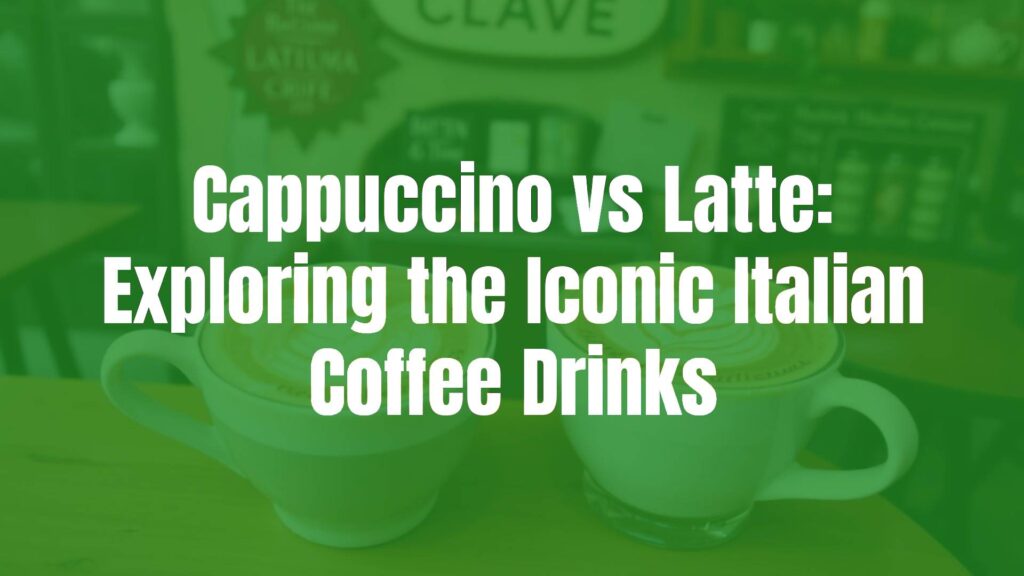The Distinct Worlds of Cappuccino and Latte
Italian coffee culture is rich and nuanced, with two of its most beloved beverages—cappuccino and latte—capturing global attention. Although they might seem similar at first glance, each boasts unique characteristics, making them favorites for different moments and preferences. Let’s dive into what sets cappuccino and latte apart, and where their similarities unite them on the Italian café menu.
Historical Origins and Evolution
The cappuccino has its origins in early 20th-century Italy, taking its name from the Capuchin friars, whose brown robes resembled the drink’s characteristic color. It became a morning staple for many Italians, known for its strong espresso base balanced with creamy froth. The latte—short for caffè latte (‘milk coffee’)—emerged as a smoother, milkier variant, gaining international popularity for its gentle profile and artful presentation, especially in North America and Europe.
Ingredient Composition and Proportions
Both beverages share three essential ingredients: espresso, steamed milk, and milk foam. What defines each is the ratio:
- Cappuccino: Traditionally features equal thirds of espresso, steamed milk, and milk foam, resulting in a balanced mix that’s rich yet light.
- Latte: Emphasizes steamed milk, typically composed of one shot of espresso to three or more parts steamed milk, topped with a light layer of foam.
These proportions influence not only mouthfeel, but also how the coffee and milk flavors are experienced.
Preparation Styles
Preparation starts with a base of robust espresso for both drinks. The cappuccino receives a firm foam topping, often with a dome-shaped look. In contrast, the latte’s milk is steamed for a silkier, more integrated texture, allowing for intricate latte art thanks to its thinner microfoam layer.
Texture, Flavor, and Appearance
The classic cappuccino delivers a punchy espresso taste, balanced by thick, airy foam that creates a velvety sensation. Its smaller size (125–180 ml) concentrates both coffee and creaminess. The latte, with its larger, milkier build (typically 240–360 ml), softens the espresso’s bitterness, offering a gentle, smooth drink ideal for those who prefer a milder coffee experience.
Serving Traditions and Presentation
Cappuccinos are usually served in ceramic cups that hold heat and highlight the foam’s height. Lattes are commonly presented in tall glasses or wide cups, making room for beautiful milk art and optimal heat retention. Both drinks may be topped with a sprinkle of cocoa or cinnamon, though this is more common outside Italy.
Common Misunderstandings and Questions
- Are cappuccinos and lattes the same? Despite shared ingredients, their proportions drastically alter the drinking experience.
- Do Italians drink lattes? In Italy, ordering a “latte” might get you just milk; caffè latte is the correct term for this milky coffee.
- Is foam essential? Yes, both drinks require foam, but cappuccino’s layer is thicker and more prominent than that of a latte.
- Which is stronger? Ounce for ounce, cappuccino often tastes stronger due to less milk, but both typically start with the same espresso shot.
Similarities and Shared Traditions
Cappuccino and latte not only reflect Italy’s mastery of coffee craft but also illustrate the role of ritual and regional preference in coffee enjoyment. Both drinks are morning favorites in Italy, best enjoyed leisurely with a pastry, and symbolize comfort and connection around the world.
Conclusion: Which Should You Choose?
If you crave a bold espresso flavor wrapped in luscious foam, the cappuccino is your go-to. Prefer a gentler, milk-forward cup suitable for lingering over breakfast or customizing with syrups? The latte is your best bet. Ultimately, the choice comes down to your flavor preferences and the kind of coffee moment you seek.

